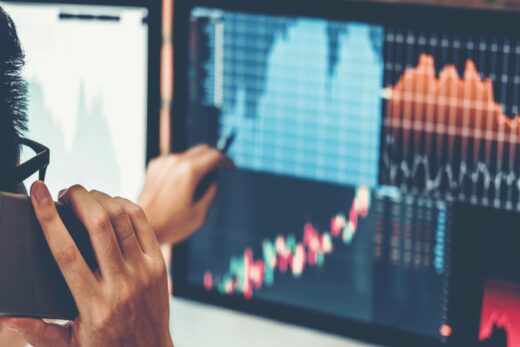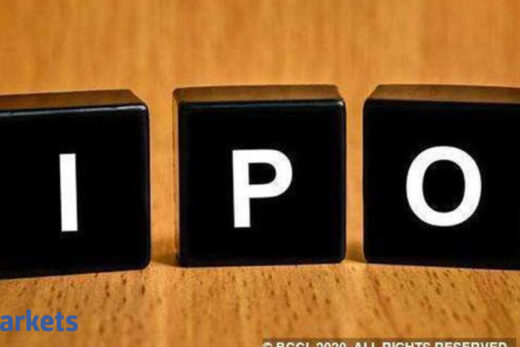The last memo of Howard Marks was slightly different. You are talking about growth investing which is a big departure from Howard Marks as a value investor. Why is that?
Well my son and his family came to live with us for most of the pandemic and he is a growth investor. He is flexible and not too dogmatic and his position is that the division between growth and investing is artificial and counterproductive. The most important thing for an investor is to be open-minded. He argues for example that the mere fact that the company has run very well, has a great market and is fast growing should not bar it from investment and we should not say well we only invest in slowing growing prosaic companies. The mere fact that a company is excellent and sells at a high valuation multiple, should not bar it and that we should be open to all kinds of companies. Fast growing companies can be attractive and even though they sell at high absolute valuation multiples, they are not necessarily overvalued because of their high quality and great potential. It makes sense to me and so I try to reflect a more open approach to investing.
Historically investors use PE and you have gone on record saying that expensive PE does not make it a bad investment; cheap PE does not make it a good investment. Would you like to elaborate?
I would change that a little bit. I would say that a low number does not necessarily mean it is cheap, rather it may be cheap and a high number does not necessarily mean it is expensive. It may be high though. If you are selling the stock at a low PE ratio or low price to book, there may be a reason. It may be a poor company and we should not buy things just because the valuation numbers are low in the absolute and we should not refrain from buying things just because the valuation multiples are high.
In your books and memos you have always placed extra importance on the behaviour of the market. What according to you captures the current behaviour? Is it FOMO, is it a bubble, is it euphoria?
It is certainly reflecting elements of those things and there is what I would normally call risky behaviour taking place in certain ways. The ease of offering specs, the ease of doing IPOs and the fact that IPOs double on the first day. We have what I call FOMO (Fear of Missing Out) and that has taken over from the fear of losing money because people have to be invested in this world when things are going up. All these things are somewhat worrisome and of course the PE ratio on the S&P is high relative to history.
But on the other hand, the composition of the S&P has changed. 30% of the S&P is now high tech and software companies which are much better companies with much greater potential than some of the companies of the past. So, the fact that they carry high PEs and have pulled up the average PE on the S&P may be warranted. The mere fact that the PE is higher than it used to be does not mean that it is dangerous but we should be alert. In particular, the Fed cut the interest rates to zero and the truth is that lower the interest rates, the higher the valuation should be because when the valuation is higher, the prospective return is lower. That is a learning but then we say well if interest rates are low, low perspective returns are not that frightening. We have to be cautious but we should not be scared and there is a difference and we should not refuse to invest merely because there are elements of a riskiness present.
One Howard Marks’ quotation which is on my wall is: “What smart guys do in the beginning and what fools do in the end.” What should smart people do currently and what do you think fools are doing? Everybody is waiting for a correction but it is not coming and those who are not waiting, are not making money?
One of the smartest things I have learnt was back in the early 70s and wise investors said to me that there are three stages to the bull market, the first stage when only a very few foresighted people began to believe there could be improvement. The second stage when everybody knows things are getting better. And the third stage when people believe things can only get better forever.
It is important to know which stage we are in and the wise man acts in the first stage and gets great bargains because there is no optimism in prices and the fool overpays in the third stage because there is no pessimism and excessive optimism. So where are we? We are certainly not in the first stage, we are probably not in the second stage. We have to worry about being in the third stage and that is why I think it is important to be cautious. But at the same time, we are in the beginning of an economic recovery. We had the worst quarter in history in the second quarter of last year and it probably washed out a lot of excesses from the economy.
There is no reason to think we are going to have another recession anytime soon. We may have to slow down and deal with the resurgence of the Covid but it is not going to be a full-fledged recession. We have a good economic outlook, we have high PE ratios for tech companies. It may be a little higher than it is warranted but certainly not entirely unwarranted. I do not think we have to flee the market, I do not think we have to eliminate the risk in our portfolios. But, given the things I describe, it is desirable to have a portfolio which is well invested.
It is desirable to have an overweighting in our portfolios. A mantra at Oaktree is move forward but with caution. It has been our mantra for a few years now and I would continue to highly value caution in our portfolios. Fully invested in a cautious manner is the good way to be right now.



